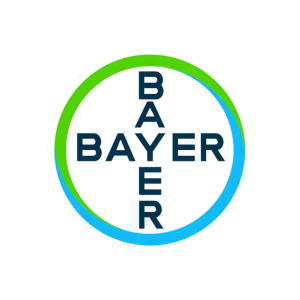Global Crop Protection Chemicals Market 2023 to 2028: Players Include BASF, Corteva Agriscience, Sumitomo Chemical, Syngenta and Bayer Cropscience
Rhea-AI Summary
The global crop protection chemicals market was valued at US$ 88.0 Billion in 2022, projected to grow to US$ 116.5 Billion by 2028, at a CAGR of 4.79%.
Key players include BASF, Corteva Agriscience, and Bayer Cropscience. The market is segmented by product type (herbicides, insecticides, fungicides), with herbicides currently dominating. Other categorizations include origin (synthetic, natural), crop type (cereal, fruits, oilseeds), form (liquid, solid), and application methods (foliar spray, seed treatment). As global population pressures increase, the need for effective crop protection chemicals will be critical for maintaining agricultural productivity and food security.
Positive
- Projected market growth from US$ 88.0 Billion in 2022 to US$ 116.5 Billion by 2028.
- CAGR of 4.79% indicates a stable growth trajectory in the crop protection sector.
- Herbicides dominate the market, enhancing agricultural efficiency and yields.
Negative
- None.
News Market Reaction 1 Alert
On the day this news was published, BAYRY gained 0.59%, reflecting a mild positive market reaction.
Data tracked by StockTitan Argus on the day of publication.

The global crop protection chemicals market size reached
Companies Mentioned
- BASF SE
- Corteva Agriscience
- Sumitomo Chemical Co. Ltd
- Syngenta AG
Bayer Cropscience AG - FMC Corporation
Monsanto Company - Nufarm Limited
ADAMA Agricultural Solutions Ltd.
Crop protection chemicals help in managing and minimising plant diseases, weeds and other pests that damage agricultural crops. These chemicals also help in increasing and maintaining year over year crop yield. Crop protection chemicals can be mainly classified into herbicides, insecticides, and fungicides.
Earlier, farmers used to control the infestation of insects and fungi by inorganic compounds such as arsenic and mercury salts. Currently, there are hundreds of chemicals available for protecting crops from getting damaged by birds, insects, rodents, bacteria, etc. The importance of crop protection chemicals have increased significantly over the last few decades catalysed by the need to enhance agricultural output and ensure adequate food availability for the growing global population.
From a population of around 7.6 Billion people today, the global population is expected to exceed 9 Billion by 2050. Moreover, the amount of arable land is also decreasing with rising urbanisation levels and more people living in cities compared to the countryside. Crop protection chemicals are expected to play a major role in increasing agriculture productivity in the coming years.
These chemicals are expected to maximize agriculture yield by eliminating pests that reduce yields; resulting in more product per acre and lowering the need to convert natural areas such as woods and forests, native prairies, wetlands, plains, and other wildlife habitat into farm lands.
Crop protection chemicals such as herbicides have made no-till farming a viable option, allowing farmers to reduce erosion by leaving the soil largely undisturbed. Herbicides can be utilised for controlling weeds in no-till crop production, removing the need for cultivation; residue from the previous crop holds the soil in place during wind and rain. Crop residue also prevents runoff of agricultural chemicals and soil that may otherwise impact aquatic habitat and fresh water supplies downstream.
Another major benefit of crop protection chemicals is the control of infectious insects. Livestock is affected by flies and various other pests that cause disease, deliver painful bites, and impose stress. Insecticides play a major role in controlling these insects, resulting in animals converting their feed into meat and milk more efficiently and thus increasing profitability.
Crop protection chemicals have also been used to reduce the spread of exotic pest populations. For instance, herbicides were found to be very effective in controlling the weed purple loosestrife in marshes and wetlands. Similarly, herbicides were also effective against
Crop Protection chemicals also provide a major role in producing high quality grain and forage. For example, insecticides protect alfalfa crops from insects and diseases which would otherwise lead to significant reduction in the protein content (an important dietary requirement for dairy cattle) and yield.
Key Market Segmentation:
The publisher provides an analysis of the key trends in each sub-segment of the global crop protection chemicals market report, along with forecasts at the global and regional level from 2023-2028. Our report has categorized the market based on product type, origin, crop type, form and mode of application.
Breakup by Product Type:
- Herbicides
- Fungicides
- Insecticides
- Others
Based on the product type, the market has been segmented into herbicides, fungicides, insecticides and others. Currently, herbicides dominate the market, holding the largest share.
Breakup by Origin:
- Synthetic
- Natural
Based on the origin, the market has been segmented as synthetic and natural. Synthetic crop protection chemicals currently represent a bigger segment.
Breakup by Crop Type:
- Cereal and Grains
- Fruits and Vegetables
- Oilseed and Pulses
- Others
Based on the crop type, the market has been segmented as cereal and grains, oilseed and pulses, fruits and vegetables, and others.
Breakup by Form:
- Liquid
- Solid
Based on the form, the market has been segmented as solid and liquid.
Breakup by Mode of Application:
- Foliar Spray
- Seed Treatment
- Soil Treatment
- Others
On the basis of mode of application, the market has been segmented as foliar spray, seed treatment, soil treatment and others.
Breakup by Region:
Asia Pacific North America Europe Middle East andAfrica Latin America
Region-wise, the market has been segmented into
Key Questions Answered in This Report
1. What was the size of the global crop protection chemicals market in 2022?
2. What is the expected growth rate of the global crop protection chemicals market during 2023-2028?
3. What are the key factors driving the global crop protection chemicals market?
4. What has been the impact of COVID-19 on the global crop protection chemicals market?
5. What is the breakup of the global crop protection chemicals market based on the product type?
6. What is the breakup of the global crop protection chemicals market based on the origin?
7. What is the breakup of the global crop protection chemicals market based on the crop type?
8. What is breakup of the global crop protection chemicals market based on the form?
9. What is the breakup of the global crop protection chemicals market based on the mode of application?
10. What are the key regions in the global crop protection chemicals market?
11. Who are the key companies/players in the global crop protection chemicals market?
For more information about this report visit https://www.researchandmarkets.com/r/kovo36
About ResearchAndMarkets.com
ResearchAndMarkets.com is the world's leading source for international market research reports and market data. We provide you with the latest data on international and regional markets, key industries, the top companies, new products and the latest trends.
Media Contact:
press@researchandmarkets.com
For E.S.T Office Hours Call +1-917-300-0470
For
For GMT Office Hours Call +353-1-416-8900
Fax (outside
Logo: https://mma.prnewswire.com/media/539438/Research_and_Markets_Logo.jpg
![]() View original content:https://www.prnewswire.com/news-releases/global-crop-protection-chemicals-market-2023-to-2028-players-include-basf-corteva-agriscience-sumitomo-chemical-syngenta-and-bayer-cropscience-301782375.html
View original content:https://www.prnewswire.com/news-releases/global-crop-protection-chemicals-market-2023-to-2028-players-include-basf-corteva-agriscience-sumitomo-chemical-syngenta-and-bayer-cropscience-301782375.html
SOURCE






